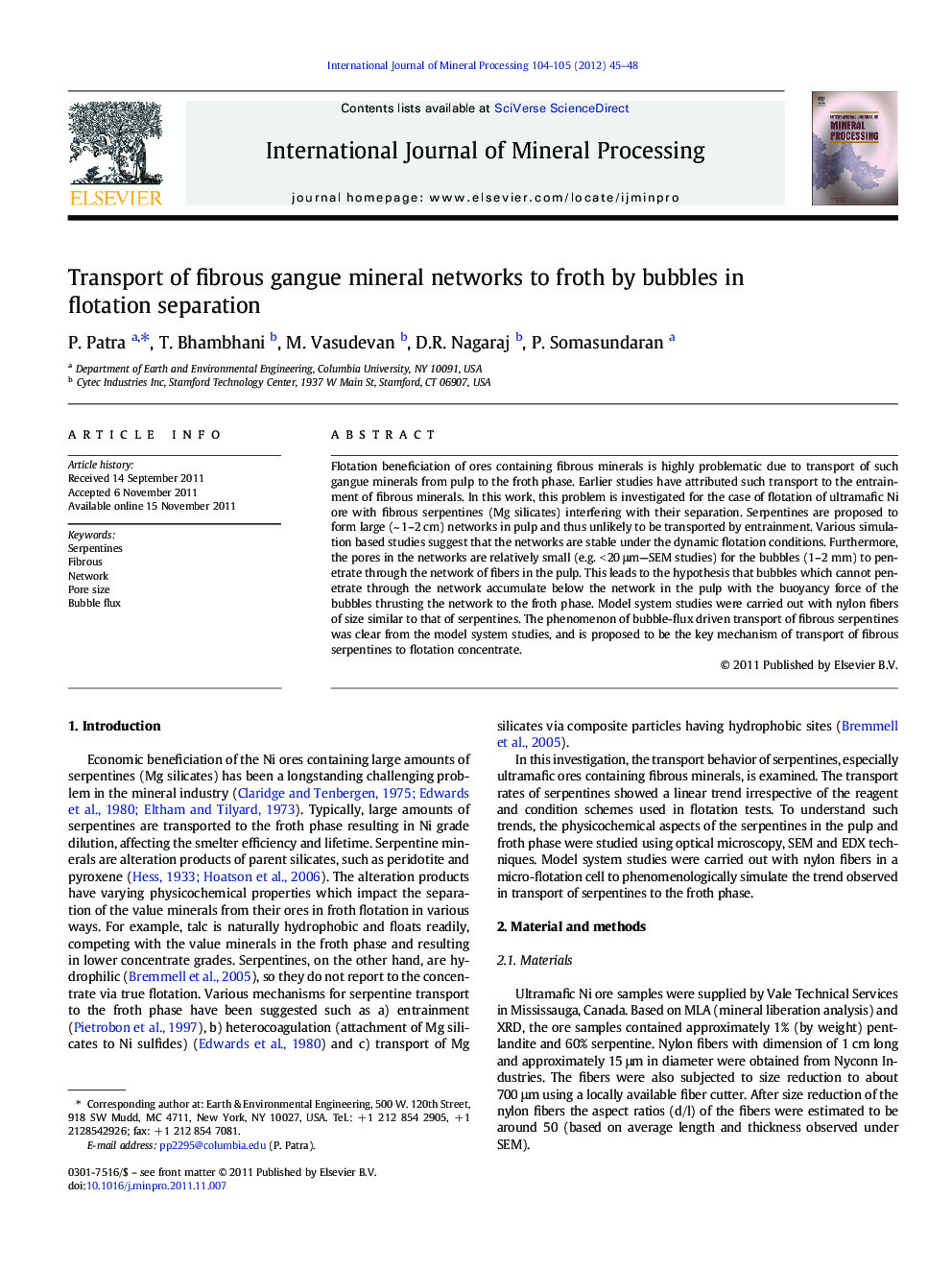| Article ID | Journal | Published Year | Pages | File Type |
|---|---|---|---|---|
| 214234 | International Journal of Mineral Processing | 2012 | 4 Pages |
Flotation beneficiation of ores containing fibrous minerals is highly problematic due to transport of such gangue minerals from pulp to the froth phase. Earlier studies have attributed such transport to the entrainment of fibrous minerals. In this work, this problem is investigated for the case of flotation of ultramafic Ni ore with fibrous serpentines (Mg silicates) interfering with their separation. Serpentines are proposed to form large (~ 1–2 cm) networks in pulp and thus unlikely to be transported by entrainment. Various simulation based studies suggest that the networks are stable under the dynamic flotation conditions. Furthermore, the pores in the networks are relatively small (e.g. < 20 μm—SEM studies) for the bubbles (1–2 mm) to penetrate through the network of fibers in the pulp. This leads to the hypothesis that bubbles which cannot penetrate through the network accumulate below the network in the pulp with the buoyancy force of the bubbles thrusting the network to the froth phase. Model system studies were carried out with nylon fibers of size similar to that of serpentines. The phenomenon of bubble-flux driven transport of fibrous serpentines was clear from the model system studies, and is proposed to be the key mechanism of transport of fibrous serpentines to flotation concentrate.
Graphical abstractSchematic of various steps in transport of fibrous mineral network from flotation pulp to froth phase. The white colored material in the micro-flotation cells are nylon fibers. The fibers are represented as irregular lines in the schematic of micro-flotation cells. Gray colored circles are represented as air bubbles.Figure optionsDownload full-size imageDownload as PowerPoint slideHighlights► Transport of gangue to flotation froth is problematic with fibrous ores. ► Entrainment/true flotation are proposed mechanisms by earlier researchers. ► Fibers entangle and form network in pulp with pore sizes less than bubbles. ► Bubbles percolation is restricted and thus accumulates at the network. ► Bubbles accumulation results enough buoyancy thrust for network transport.
